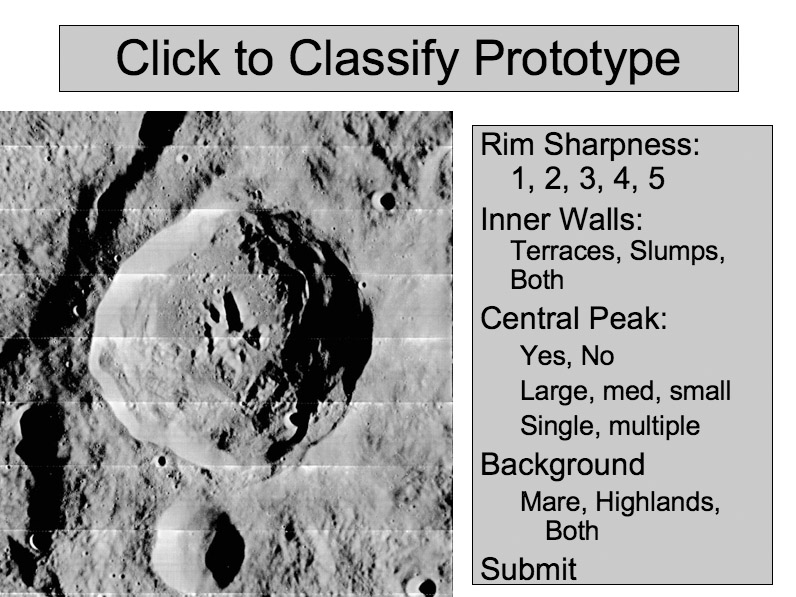
image created by Chuck Wood using Lunar Orbiter photo
Today I discovered a wonderful web site. Galaxy Zoo allows anyone to help astronomers classify distant galaxies by running through an easy tutorial and then clicking to classify whether the image shown is a merger, an elliptical, or a spiral - and if the later, with clockwise or anti-clockwise rotation. Such projects give the public an opportunity to do useful work - there aren’t enough astronomers to classify every galaxy! - and a sense of participating in an important scientific project. So naturally, I thought: What about a similar classification project for lunar craters? In the early 1960s I worked on the System of Lunar Craters, which was a project to catalog all the nearside craters with diameters larger than 3.5 km. When we finished four years later we discovered that there were 11,200 of them! Besides measuring diameters we also characterized each crater by relative age (based on rim sharpness) and morphology (existence of terraces or central peaks). Our work was done on the best available images, but that was 45 years ago, before lunar orbiters and modern amateur imaging. There has never been a repeat of our study using modern imaging, and farside craters have never been systematically classified. Why does it matter? With the old catalog it was discovered that various aspects of lunar evolution could be investigated using our data on relative crater age and morphology. I’d like to suggest its time to do another study of lunar crater characteristics using a community model like Galaxy Zoo, and with the Clementine, Orbiter and Apollo images that reveal crater interiors much better than the ancient telescopic images we had. Anyone - especially programmers - interested in exploring how such a project could be done?
PS - I know of the Clickworkers project of early this decade - that is a model to start with.
Yesterday's LPOD: A Classic Returns
Tomorrow's LPOD: M & M
COMMENTS?
Register, Log in, and join in the comments.



